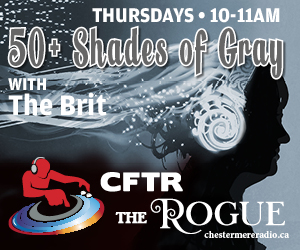History buffs may recall that monasteries were some of the first organizations to brew beer on a regular basis.
Way back in the Middle Ages, a French order of Cistercian monks known as the Trappists were the first to open a brewery inside the walls of their abbey, both as a hearty liquid to sustain the monks on fasting days, but also to feed the surrounding townsfolk as a charitable endeavor.
In order to be called a Trappist brewery, the beer must be brewed within the walls of a monastery under the supervision of the resident monks, and can only be used for the maintenance and expenses of the abbey, with any remaining profits used for charitable outreach programs.
Sadly, the number of remaining operational Trappist breweries worldwide decreased from 11 to 10 last month, with the closure of St. Joseph’s Abbey in Massachusetts.
Of the 10 remaining Trappist breweries worldwide, half of them are in Belgium, the magical land of beer. Two more are in The Netherlands, and the final three are respectively located in Austria, Italy, and England.
Trappist beers are often referred to as liquid bread, as they were originally brewed to sustain the monks on fasting days. The typical style is heavy on malted grains, while relatively low in bittering hops.
The large malt bills mean that Trappist beers tend to be quite high in alcohol content, as the yeast continues to convert the natural sugars to alcohol even after bottling.
Beer fans who enjoy bottle conditioned brews tend to get weak in the knees when presented with a Trappist beer, and will lovingly swirl the beer from the bottle, making sure to get all the yeast sediment into the glass for added flavouring.
The most common styles of Trappist beers are Dubbel, Tripel, and Quadrupel, named in order of increasing strength.
The Dubbel style was born in 1856 at Westmalle Abbey in Belgium, and quickly gained popularity in both Trappist and secular breweries. Dubbel beers are essentially a strong Brown Ale, in the 6-8% ABV range with low bitterness and plenty of cereal malts and notes of stewed fruit.
The Tripel style is a bit stronger, usually 8-10% ABV, and is made in the style of a golden pale ale. Definitely a sipping beer, as the high gravity will creep up on you. Tripel beers tend to be slightly sweet, with plenty of spicy phenols on the tongue from the unique yeast strains.
Quadrupel is the strongest style of Trappist beer, usually weighing in at 10-14% ABV. There is tremendous variation in the style, although it is usually quite dark, with spicy overtones from the malts and flavours of red fruits from the yeasts.
Unsurprisingly, the most commonly found Trappist beers at your friendly neighbourhood booze merchant are from Belgium, which is home to 5 of the 10 Trappist breweries worldwide.
My favourite Trappist beer is from the Westvleteren Abbey in Belgium, but it is a special occasion beer due to its $25/bottle price tag. Fortunately, there are many secular breweries making beer in the same styles, but use the term Abbey Beer instead of the legally protected Trappist trademark.
The Unibroue Brewery just outside of Montreal has been creating Belgian-inspired beers since 1992, and was one of my first introductions to the world of craft beer, way back in the days of my squandered youth, when boy-bands roamed the earth with impunity.
La Fin du Monde (End of the World for you anglos) is perhaps the most famous beer from Unibroue , and is made in the Tripel style, weighing in at 9% ABV with loads of malt flavours and a spicy coriander finish.
Looking a little closer to home, several of our local Alberta craft brewers have made Trappist-inspired brews, even if they cannot use the legally trademarked name. Calgary’s own Cabin Brewing put out a one-off seasonal brew a few months ago, made in the style of a Belgian Quadrupel with rye grains, and barrel aged in oak just like the monks of old!
So, if you cannot find a Trappist beer to provide you with both spiritual and secular fulfilment, do the next best thing by looking for the a Trappist-inspired ale at your local craft brewer or bottle shop!






